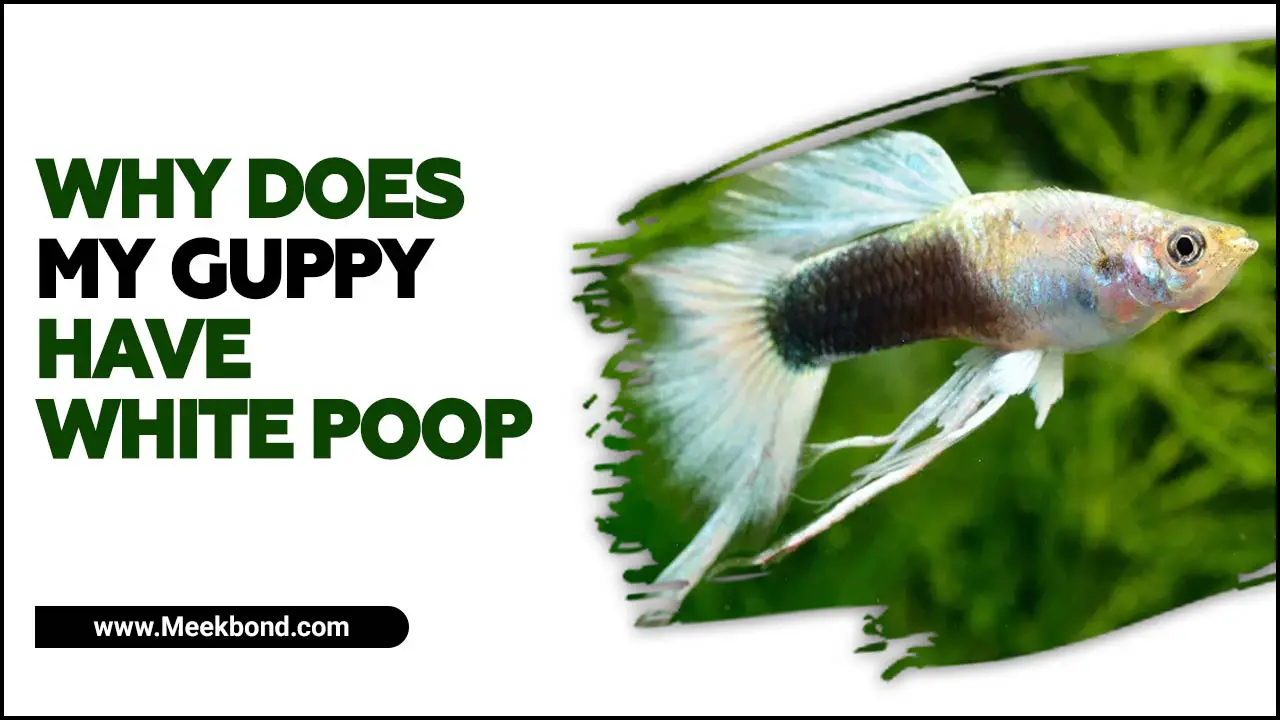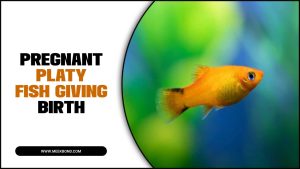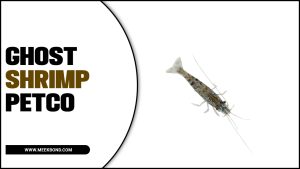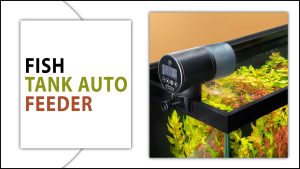Designing a fish hatchery is a critical process that lays the foundation for successful aquaculture operations or fish conservation efforts. A well-designed incubator provides the necessary infrastructure, equipment, and environmental conditions to support fish species‘ growth, reproduction, and survival.
It requires careful consideration of various factors, including site selection, water source assessment, tank systems, water quality management, and biosecurity measures.
Designing a fish hatchery can be hard, but it doesn’t have to be. With the proper knowledge and approach, you can create a successful fish hatchery that meets the needs of your business or organization. We will share expert guidelines on how to design fish hatcheries,
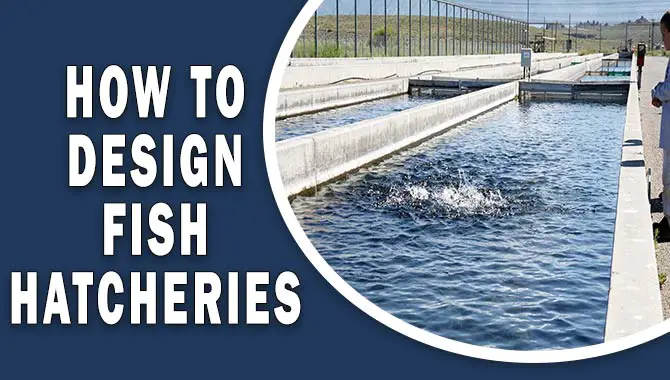
How To Design Fish Hatcheries – Proper Guidelines
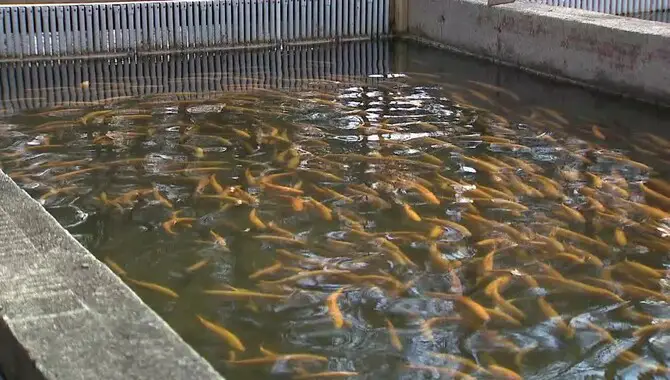
Designing fish hatcheries correctly is crucial in ensuring the survival and growth of fish populations. Several key factors need to be considered when designing an incubator, including water quality, temperature, and flow rate.
If these factors are not adequately addressed, it can lead to poor fish health, high mortality rates, and reduced productivity. Also, proper design can help prevent the spread of disease and parasites affecting the hatchery fish and wild populations.
Finally, a well-designed hatchery can also improve the efficiency of fish production by optimizing space utilization and minimizing waste. Here we give you proper guidelines on how to design fish hatcheries:
1. Determine The Hatchery Objectives

The first step in designing a fish hatchery is to define the objectives and purpose of the facility clearly. Consider the specific fish species you intend to breed and the desired production capacity.
Determine whether the hatchery will focus on conservation, stocking programs, research, or commercial production. These objectives will influence the design and layout of the facility.
2. Select The Suitable Location
Choosing the right location for the hatchery is crucial. Factors to consider include access to a reliable water source with suitable quality and temperature, proximity to fishery resources, adequate space for expansion, and accessibility for transportation and logistics. Additionally, environmental considerations, such as potential impacts on natural habitats and water sources, must be considered.
3. Design The Water Supply System
A reliable and efficient water supply system is essential for a fish hatchery. This includes designing intake structures, water treatment facilities (if necessary), and a distribution network that delivers water to different hatchery areas.
The water quality and temperature should be appropriate for the target fish species, and provisions should be made for water recirculation or waste treatment to minimize environmental impacts.
4. Plan The Fish Production Units
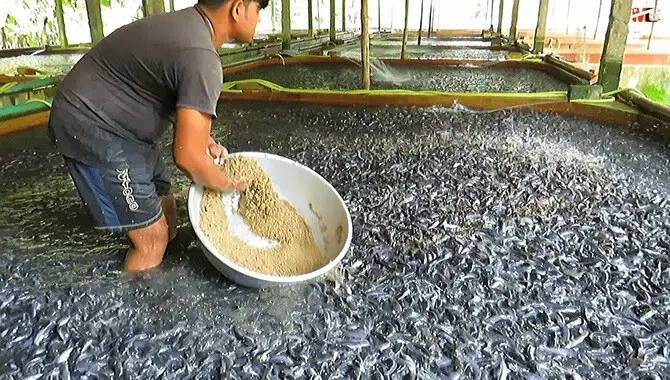
The design of fish production units will depend on the specific needs of the fish species and the hatchery objectives. Considerations include the type and size of tanks or ponds, water flow and filtration systems, lighting, aeration, and temperature control mechanisms.
Adequate space should be allocated for broodstock management, egg incubation, larval rearing, and grow-out facilities. Each production unit should be designed to optimize fish health, growth, and reproduction.
5. Ensure Biosecurity Measures
Biosecurity is critical in a fish hatchery to prevent the introduction and spread of diseases. Implement measures to control and monitor people, equipment, and fish movement within the hatchery.
This includes proper quarantine facilities for new fish stocks, strict hygiene protocols, regular disease testing, and isolation procedures. Biosecurity measures help maintain the health and integrity of the fish population.
6. Consider Environmental Factors
Design the hatchery in a way that minimizes potential environmental impacts. Incorporate sustainable practices, such as energy-efficient systems, water conservation measures, and waste management strategies.
Consider the surrounding ecosystem and potential effects on water quality, habitat, and native species. Implement strategies to minimize the risk of escapes, genetic interactions with wild populations, and the introduction of non-native species.
7. Incorporate Monitoring And Control Systems
Monitoring and control systems are crucial for efficiently operating a fish hatchery. Install equipment for water quality monitoring, temperature control, oxygen levels, and disease surveillance.
Automation and data logging systems can help track and analyze critical parameters, ensuring optimal fish growth and health conditions. Regular monitoring and maintenance protocols should be established to identify and address any issues promptly.
8. Plan For Facility Expansion And Flexibility
Consider future growth and expansion when designing the hatchery. Allow for scalability by creating modular units that can be easily expanded or modified as production demands change. Plan for future technology advancements and research requirements. Flexibility in design allows for efficient use of resources and adaptability to evolving industry needs.
Avoid Mistakes When Design Fish Hatcheries
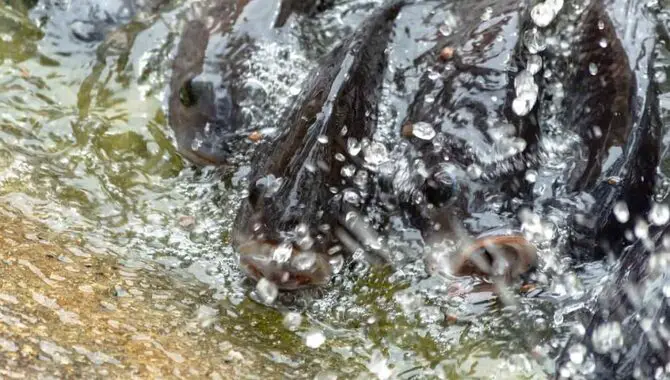
Designing a fish hatchery requires careful planning and attention to detail to ensure its success. Mistakes in the design process can lead to inefficiencies, compromised fish health, and increased operational costs. To help you avoid common pitfalls, here are key mistakes to steer clear of when designing fish hatcheries.
By avoiding these common mistakes, you can enhance your fish hatchery’s functionality, productivity, and sustainability. Thorough planning, attention to detail, and adherence to best practices will contribute to the long-term success of your hatchery operations and the well-being of the fish you raise.
1. Inadequate Site Assessment:
Failing to thoroughly evaluate the site before designing a hatchery can lead to problems down the line. Consider factors such as water quality, availability, accessibility, land suitability, and environmental considerations. Conduct a comprehensive site assessment to ensure it meets the specific requirements of the target fish species.
2. Insufficient Water Supply And Quality:
Lack of adequate water quantity and quality can severely impact fish health and hatchery operations. Ensure the water source can consistently provide the necessary volume and meet the quality parameters required for the fish species being raised. Test the water source for pollutants, contaminants, and temperature fluctuations that could negatively affect fish growth.
3. Improper Tank Sizing And Layout:
Incorrect tank sizing and layout can lead to overcrowding, poor water flow, and restricted fish movement. Consider the anticipated fish population and growth rates and carefully plan the tank sizes. Allow ample space for fish to swim and ensure proper water flow throughout the tanks to maintain water quality and prevent stress or disease outbreaks.
4. Neglecting Biosecurity Measures:
Biosecurity is crucial to prevent the introduction and spread of diseases in an incubator. Failing to implement adequate biosecurity measures can result in devastating losses. Develop a robust biosecurity plan that includes protocols for disease prevention, quarantine procedures for incoming fish, and proper disinfection practices for equipment and facilities.
5. Inadequate Water Quality Management:
Poor water quality management can lead to stress, disease outbreaks, and reduced fish production. Implement effective water filtration, aeration, and monitoring systems to maintain optimal water quality parameters. Regularly test and monitor water quality and promptly address any issues that arise to ensure a healthy environment for fish.
6. Overlooking Energy Efficiency:
It is important to consider energy efficiency in designing and operating a fish hatchery. You can reduce operational costs while minimizing your carbon footprint by implementing energy-saving measures such as using energy-efficient equipment and lighting.
Consider investing in renewable energy sources such as solar panels or wind turbines to power the hatchery. By paying attention to energy efficiency, you can save money and contribute towards a sustainable future for the planet.
7. Neglecting Staff And Workflow Considerations:
Designing a fish hatchery requires careful consideration of several factors to ensure optimal fish production and prevent disease outbreaks. Neglecting biosecurity measures can result in devastating losses, so it is crucial to develop a robust plan that includes protocols for disease prevention and proper disinfection practices.
Inadequate water quality management can also lead to reduced fish production, so effective water filtration, aeration, and monitoring systems are necessary. Additionally, incorporating energy-saving technologies and considering staff and workflow considerations can optimize operational efficiency and employee satisfaction. By taking these factors into account, you can design a successful fish hatchery that meets
8. Ignoring Future Expansion And Flexibility:
It is essential to consider future expansion and flexibility when designing a fish hatchery. As production needs change over time, having the ability to adapt and expand the facility can prevent costly renovations or even the need for a new facility altogether.
Incorporating flexible layouts, modular construction, and scalable equipment can make it easier to accommodate future growth. Additionally, considering the potential for new technologies or production methods can help ensure that the hatchery remains competitive in a constantly evolving industry.
By planning for future expansion and flexibility, you can design a fish hatchery that is both efficient and adaptable for years to come.
Fish Hatcheries Maintenance

Maintaining a fish hatchery is crucial to ensure the fish population’s health and well-being and the operation’s overall success. Regular maintenance tasks help prevent issues, optimize conditions, and promote the efficient functioning of the hatchery. Here are essential maintenance considerations for fish hatcheries:
1. Water Quality Monitoring:
Regular water quality monitoring is one of a fish hatchery’s most essential maintenance tasks. This involves testing the water for pH levels, dissolved oxygen, ammonia, and other parameters impacting fish health and growth. Monitoring water quality regularly can detect issues early on, and corrective measures can be taken before they become more significant problems.
2. Filtration System Maintenance:
Another critical aspect of fish hatchery maintenance is the upkeep of filtration systems. Proper filtration is essential for maintaining water quality and creating a healthy environment for the fish. Regular cleaning and maintenance of filters can prevent clogging and ensure they work effectively.
3. Tank Cleaning And Maintenance:
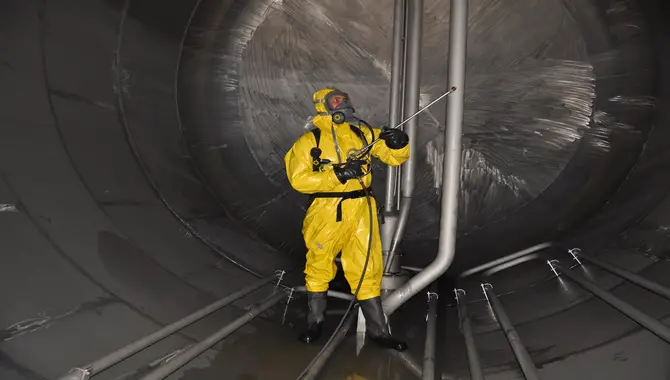
Maintaining clean and well-maintained tanks is also essential in a fish hatchery. Regular cleaning helps prevent the buildup of waste and debris, which can affect water quality and the health of the fish. It is also initial to regularly check for leaks, cracks, and other tank damage.
4. Feed Management:
Feeding fish in a hatchery is a critical task that requires careful attention. Overfeeding can lead to water quality issues, while underfeeding can result in stunted growth and poor health. Following a feeding schedule, monitoring fish growth and condition, and adjusting feed amounts are crucial.
5. Disease Monitoring And Prevention:
Disease monitoring and prevention are also necessary to maintain a healthy hatchery fish population. It involves regular health checks, quarantine protocols, and vaccinations if required. Early detection of diseases can prevent their spread and minimize the impact on the fish population. Hatchery staff should be trained in disease management to ensure appropriate measures are taken promptly.
6. Equipment Maintenance:
Proper equipment maintenance is crucial for a fish hatchery’s smooth functioning. This includes regular checks and repairs of pumps, aerators, heaters, and other essential equipment. It is important to ensure that all equipment is working correctly and efficiently to avoid any disruptions in the day-to-day operations of the hatchery.
7. Biosecurity Measures:
Biosecurity measures are paramount in a fish hatchery to prevent the introduction and spread of diseases, parasites, and other harmful organisms. This includes implementing strict protocols for visitors, equipment, and fish transportation.
Hatchery staff should also practice proper hygiene and use appropriate protective gear when handling fish or entering tanks. Regular water quality and fish health testing are also necessary to detect any potential threats early on. By prioritizing biosecurity measures, hatcheries can maintain a healthy and robust fish population with minimal risks.
8. Record-Keeping:
Effective record-keeping is an essential component of designing fish hatcheries. It helps hatchery staff stay organized and informed about the daily operations, feeding schedules, fish growth rates, water quality parameters, and any other critical data related to the facility’s functioning.
Accurate record-keeping also facilitates efficient communication between hatchery staff members and enables data-driven decision-making processes. Keeping detailed records of all hatchery-related activities can help identify potential problems early on and allow for timely interventions to prevent disruptions in the incubator’s optimal functioning.
9. Staff Training:
Lastly, a fish hatchery’s success depends heavily on its staff’s skills and knowledge. It is crucial to provide comprehensive training programs for all hatchery employees to ensure they have the expertise to handle all hatchery operations. This includes training on fish biology, water quality management, biosecurity procedures, equipment maintenance, and record-keeping practices.
Regular training sessions can also help empower staff members to adopt innovative techniques that can improve the overall efficiency and productivity of the incubator. Investing in staff education and development is critical to designing successful fish hatcheries that can thrive and meet their objectives in the long run.
10. Environmental Considerations:
In addition to all the technical aspects of designing fish hatcheries, it is imperative to consider environmental factors. Developing incubators can have significant impacts on local ecosystems and communities. Therefore, conducting thorough environmental impact assessments before building an incubator and considering measures to mitigate negative effects is essential.
This could include selecting suitable locations for the incubator, implementing sustainable water management practices, incorporating renewable energy sources, and minimizing waste generation. Striving towards environmentally responsible designs and operations can help create a sustainable and successful fish hatchery that benefits the industry, the surrounding environment, and society.
Conclusion
Designing fish hatcheries is a complex and critical process that requires careful planning, attention to detail, and consideration of various factors. A well-designed hatchery provides an optimal environment for fish reproduction, growth, and survival, ultimately leading to successful aquaculture operations or fish conservation efforts.
Throughout this guide on how to design fish hatcheries, we have explored the key considerations and best practices involved in creating fish hatcheries. We discussed the importance of site assessment, water quality management, tank sizing, biosecurity measures, and staff training.
And emphasized the significance of proper maintenance, equipment upkeep, and environmental considerations in ensuring a hatchery’s long-term success and sustainability. We hope this information may help you.
Faqs
How Important Is Water Quality In A Fish Hatchery?
Water quality is crucial in a fish hatchery as it directly impacts fish health and growth. Proper water treatment and monitoring systems should be in place to maintain optimal conditions for the target fish species.
Are There Specific Regulations Or Permits Required For Designing A Fish Hatchery?
Regulations and permit requirements vary by jurisdiction. It is essential to consult with local authorities and fisheries agencies to ensure compliance with relevant laws and obtain the necessary permits before designing and operating a fish hatchery.
Can Different Fish Species Be Reared Together In The Same Hatchery?
It is generally recommended to separate different fish species to prevent cross-contamination and maintain genetic integrity. Some exceptions may exist, but compatibility and potential risks should be carefully considered.
What Is The Role Of A Fish Hatchery In Conservation Efforts?
Fish hatcheries play a crucial role in conservation by breeding and rearing endangered or threatened fish species for population restoration or stock enhancement programs. Incubators also contribute to research and monitoring efforts to understand better and protect fish populations and their habitats.
Can A Fish Hatchery Be Designed For Recreational Purposes, Such As Sportfishing?
Fish hatcheries can be designed to support stocking programs for recreational fishing. The hatchery design would prioritize the breeding and rearing of fish species popular among anglers and meet the specific requirements for sportfishing activities.

Aquarium passion is all about connecting with the aquatic life and providing education to the public on the importance of these creatures. We showcase a wide variety of marine life through our exhibits as well as working with schools to provide unique learning opportunities for students of all ages.




